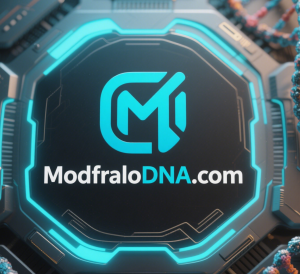
Modified RNA: Definition and Key Insights
Modified RNA refers to RNA molecules chemically or biologically altered from their natural state to enhance stability, functionality, or regulatory capacity. These modifications are revolutionizing biomedical research, therapeutics, and biotechnology. Below is a detailed breakdown of its principles, applications, and innovations:
1. Core Techniques
Chemical Modifications
- Methylation: Addition of methyl groups (e.g., m⁶A, m¹A) to bases or ribose sugars, improving RNA stability and translation efficiency.
- Pseudouridine (Ψ): Replaces uridine to reduce immunogenicity and enhance stability, widely used in mRNA vaccines.
- Thio-modifications: Sulfur atoms replace oxygen in phosphate backbones, increasing resistance to enzymatic degradation.
- GlycoRNA: RNA molecules linked to glycans (sugar chains), recently discovered to play roles in immune regulation and cellular recognition.
2. Applications
Therapeutics and Vaccines
- mRNA Vaccines:
- Moderna and BioNTech/Pfizer’s COVID-19 vaccines use Ψ-modified mRNA to encode viral spike proteins, enabling safe and potent immune responses.
- Gene Therapy:
- Modified RNA delivers therapeutic proteins (e.g., antibodies, enzymes) directly in vivo, bypassing traditional protein production.
Research Tools
- Functional Studies: Investigating RNA modifications’ roles in splicing, translation, and epigenetic regulation.
- GlycoRNA: Emerging as key players in autoimmune diseases and cancer progression.
3. Advantages Over Natural RNA
| Feature | Natural RNA | Modified RNA |
|---|---|---|
| Stability | Low (prone to RNase degradation) | High (resistant to degradation) |
| Immunogenicity | Triggers innate immune responses | Reduced immune activation |
| Functional Scope | Limited to natural roles | Expanded roles (e.g., glycoRNA) |
4. Notable Examples
- mRNA Vaccines: Ψ-modified mRNA in COVID-19 vaccines enhances antigen expression and safety.
- GlycoRNA: A 2024 discovery showing sugar-modified RNAs interact with immune receptors, influencing disease pathways.
5. Future Directions
- AI-Driven Design: Tools like AlphaFold for RNA to predict modification effects.
- Multi-Omics Integration: Linking RNA modifications with epigenomic and proteomic data.
- Targeted Delivery: Engineering cell-specific carriers (e.g., lipid nanoparticles with targeting ligands).
Summary
Modified RNA technologies—through precise chemical tweaks—are transforming biomedicine. From pandemic-ending vaccines to cutting-edge gene therapies, these innovations exemplify how molecular engineering can unlock RNA’s full potential. As research advances, modified RNA will continue to redefine therapeutic paradigms, offering solutions for cancer, genetic disorders, and beyond.





Modified RNA(修饰RNA) 是指通过化学或生物手段对天然RNA分子进行结构改造的一类RNA,其核心特征是对碱基、核糖或磷酸骨架的化学修饰26。以下是其关键要点:
一、修饰类型与作用
碱基修饰
常见修饰包括甲基化(如m⁶A)、乙酰化(如ac⁴C)和硫代(如s²U)等,可增强RNA稳定性或改变其翻译效率。
例如:假尿苷(Ψ)修饰能降低mRNA的免疫原性,是新冠疫苗技术的关键改进。
糖基化修饰
糖RNA(glycoRNA)是近年发现的新型修饰RNA,通过聚糖连接RNA支架,可能参与免疫调控。
二、技术应用
治疗领域
modRNA(化学修饰mRNA)通过脂质体递送,可高效表达治疗性蛋白,用于疫苗开发(如BioNTech/Moderna疫苗)和细胞重编程。
修饰核苷酸(如m¹Ψ)是合成稳定mRNA的关键原料。
基础研究
RNA修饰参与基因表达调控,如m⁶A影响mRNA剪接和降解。
三、发展历程
卡塔琳·卡里科等科学家早期探索修饰RNA技术,但因未被重视而历经挫折,最终推动mRNA疗法革命。
修饰RNA通过结构优化突破了天然RNA的局限性,成为生物医学的重要工具。